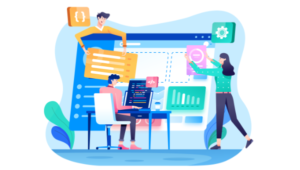Some of you have requested an update on Experience Publishing, my most recent startup. Now is a good time for an update about what we have learned in getting this venture going, in the hope that my lessons help you with your web projects.
First, Experience Publishing’s strategy is to build a flexible technology platform that can quickly launch and test subscription-based content. We license content from a variety of publishers/authors, and turn that content into paid subscriptions. This is a challenging business, because we are asking people to pay for content online, but there are already promising examples of how profitable this model can be with the right marketing and products. Also, to succeed, we don’t need a million subscribers; just a few thousand can be very profitable for us.
Warning: I am about to provide links to some of our products. I’m always sensitive about doing this as a blogger on Sitepoint. My intent below is to educate you and not promote any products. But I also want you to visit the sites to check them out, if you want. If you are skeptical about my intentions in this blog, don’t read past this paragraph, or don’t visit the links. For obvious reasons, the sites are selling something!
Our products currently up and being tested include: my marketing content at www.attractnewclients.com; a family safety program (www.bealertbeawarehaveaplan.com); an organization program (www.organizeyourselfonline.com); a parenting program (www.commonsenseparentingonline.com); a career/calling site (www.shiftingintohighergear.com); and more coming soon. (NOTE: Only www.attractnewclients.com is ready for prime time, so don’t sign up for others; I’m mentioning them for illustrative purposes only).
Using the AttractNewClients product as the test case where we have the most experience, here are the lessons we have learned:
1. Pick the right technology platform. We went with Java Struts to build this platform. Bad idea. Too inflexible. Ultimately we scrapped it in favor of php/open source.
2. Pick the right development team. Our initial team was wrong for this job. Too focused on technology. They didn’t understand our business requirements. We got a new team that helped us focus and prioritize requirements, and pushed us hard to do what we needed to do to test products at low cost.
3. Focus on marketing as soon as you can. Because of our mistakes with technology, we spent far too long focused on technology. But we want technology to be in the background, something we take for granted, so we can focus on marketing. If we could do it again, we could have saved LOTS of money and time testing bare-bones products fast.
4. Make an offer that blows away the competition. On Attract New Clients, we initially had lots of trouble conveying to people the uniqueness of our online service. So we de-emphasized that and focused on one-on-one coaching and a free marketing manual. Then we acknowledged that the online service is hard to describe in full, and took a shot at it anyway, while focusing on the value of the coaching and book. We know that proprietary online books sell for between $30 and $300. We know online services sell for $60 per quarter. And one-on-one email support goes for $30-$99 per month. So we combined all of these things into a single offer for less than any one service (like Microsoft did with Office back when WordPerfect was the industry standard for word processing, and cost as much as the whole Office Suite). So far, tests to my own list and to some external marketing sources (AdWords, etc) have been very positive. We now feel confident we have a great product, and that we can significantly increase the price (pending testing to optimize the price).
5. Test lots of approaches. We have tested all sorts of offers and navigation flows, and continue to test and improve. Now that technology issues are fixed, we can really get out there and test new approaches fast. So we are trying the default offer you see, a two-step process (free checklist followed by emails about the service), simplified credit card ordering pages (e.g. collect different information on different pages instead of overwhelming customers with a single page requesting lots of info), higher up front price, and much more.
6. Test different designs. We are testing one-page letter formats, and you can see different designs on www.organizeyourselfonline.com vs. the www.attractnewclients.com approach. Time will tell which one is more profitable. Similarly, we have hired a product designer to improve our internal portal. We have redesigned the product portal once to make it cleaner and simpler, and have a new redesign already in the works.
7. Measure everything. We invested lots of money and time in being able to set up different campaigns and measure exact user response by ad, key word, page, email follow up, and much more. It is well worth it.
8. Get people involved. On www.commonsenseparentingonline.com, we have gotten tremendous response to the parenting quiz you see there. That lets us collect lots of email addresses and follow up with people.
9. Follow up. Conversion definitely goes up with a series of emails that provide good information about the product and the challenges prospects are probably facing. The challenge is to collect emails on first page, which is proving successful in models you see.
10. Set modest goals. Paid content is different than free content. We don’t expect or need a million subscribers. We know that the vast majority of people won’t pay for content, and that is fine. We also know that many people want what we can offer: a single system (instead of a mish-mash of ideas), a sanctuary from pop ups and ads, exclusive community, and access to experts. If we can get 10,000 subscribers paying $45 per quarter, we’ll be doing fine.
11. Get live feedback. We contact prospects and customers alike and ask them for their impressions about the site. Why did or didn’t they buy? What do they like? What would they like to see?
12. Market online and offline, and build up gradually. We are scrupulous about starting small with our marketing dollars, and only expanding when we have an advertising/marketing source that works. So we focus on pay per response (not per click, not per impression) advertising sources. We also focus on offline partnerships with people who reach lots of potential customers (e.g. in the case of AttractNewClients, associations, CRM software makers, trade groups, chambers of commerce, etc).
13. Did I say test? We have dozens of tests in the works for each product.
14. Give good customer service. Our initial test customers have been very patient with us as we converted our technology. We have essentially told them that we won’t charge them for their service at all going forward. Now we will convert them to the new site, and keep our word (if you are one of them and don’t get an email from us in next week, contact me right away!). Similarly, if we get customer complaints about anything at all, we contact customers right away to talk to them and resolve their issue. You have to provide online and personal service.
15. Don’t be defensive. We have taken lots of advice from customers, prospects, and vendors. While some of that advice stings, it is invaluable.
16. Hedge. I still have a bunch of other streams of income coming in: consulting, a new book coming out soon, another web site coming out, and a line of kids products I’m developing with my wife. All or some of these will be a hit.
So that’s the update. I hope this is helpful. Ask any questions, check out the sites, and let me know if this is a useful case study.


